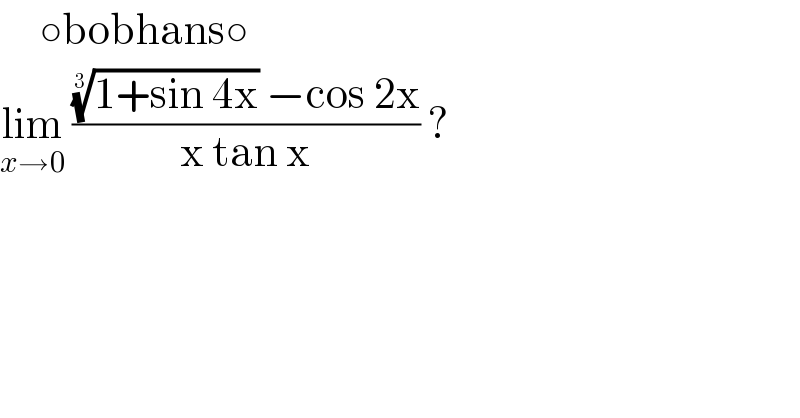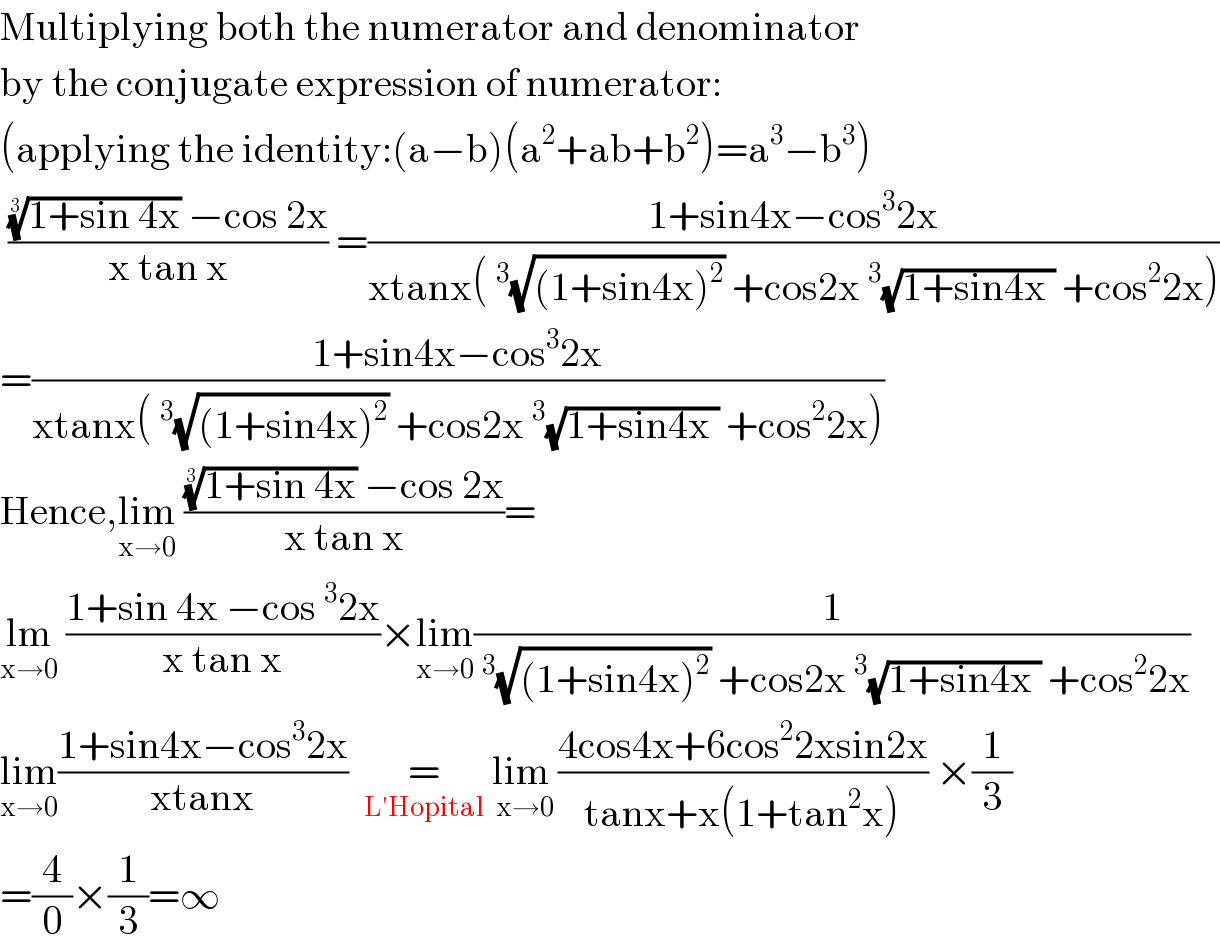
Question and Answers Forum
Question Number 106842 by bobhans last updated on 07/Aug/20

Commented by bemath last updated on 07/Aug/20

Commented by bemath last updated on 07/Aug/20

Commented by bemath last updated on 07/Aug/20

Commented by 1549442205PVT last updated on 07/Aug/20

Commented by bobhans last updated on 07/Aug/20

Answered by Dwaipayan Shikari last updated on 07/Aug/20

Commented by Dwaipayan Shikari last updated on 07/Aug/20

Answered by 1549442205PVT last updated on 07/Aug/20

